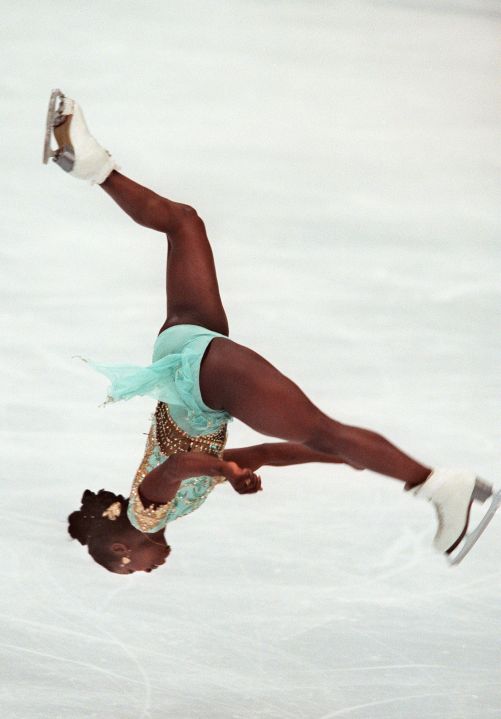(NEXSTAR) – Fans of Olympic figure skating should prepare to be dazzled with all the loops, Lutzes and Axels they can handle at this year’s Winter Games. But what they shouldn’t expect to see is someone sitting on their partner’s head, or one teammate swinging the other by their ankles.
But why not?
Well, as exciting as these maneuvers sound, they’re currently banned in professional competition by the International Skating Union (ISU), the governing body for competitive figure skating events.
In fact, the ISU outlines at least 10 “illegal” elements, movements and poses in its official rulebooks, though several of the descriptions are somewhat vague. For instance, the ISU prohibits “lifts with wrong holds” and “somersault-type jumps,” both of which could cover a variety of possibly dangerous maneuvers.
Perhaps the most common example of an illegal move is the backflip, prohibited along with other aforementioned “somersault-type jumps.” Though sometimes seen at exhibition performances, the move is rarely executed in professional competition, and has been considered “illegal” since 1976.

One notable exception occurred at the 1998 Winter Games in Nagano, Japan, when Surya Bonaly of France performed a backflip during her free skate routine, despite knowing she would be docked for the maneuver. As the story goes, Bonaly knew she wasn’t in contention for a medal after falling earlier in the routine, so she decided to leave viewers with something to talk about.
“I had a standing ovation before I ended my program,” Bonaly remarked in an episode of the Netflix docu-series “Losers,” released in 2019. “People were just crazy about it. Except the judges.”
She also landed the backflip on one skate — drawing praise from Olympic gold-medalist Scott Hamilton.
“[She’s] so strong to be able to do that,” remarked Hamilton, a commentator at the Nagano Games, while watching a replay. “I’ve been doing backflips for 14 years, and I can’t land one on one foot.”
Bonaly finished in 10th place, but it didn’t matter much. As Hamilton himself later acknowledged, he barely remembers who finished ahead of her in that event.
Of course, there are plenty of other “illegal” maneuvers that aren’t allowed in professional competition, despite being performed at exhibition shows all the time. (Ever see a skater being swung by her ankles, or crisscrossing her legs around her partner’s neck during a hands-free spin? If so, it almost surely wasn’t during the Olympics.)
A complete list of other illegal elements, as described in the ISU’s Special Regulations & Technical Rules, are as follows:
Illegal maneuvers for Singles and Pairs events
- Somersault-type jumps
- Lifts with wrong holds
Illegal maneuvers for Ice Dance events
- Sitting on the partner’s head
- Standing on the partner’s shoulder
- Lifted partner in upside-down split pose (with sustained angle between thighs more than 45 degrees)
- Lifting partner swinging the lifted partner around by holding the skate(s)/boot(s) or leg(s) only with fully extended arm(s)
- Lifting partner swinging the lifted partner around without the assistance of hand(s)/arm(s) and the lifted partner holds only with legs/feet around the lifting partner’s neck
- Point of contact of the lifting hand(s)/arm(s) of the lifting partner with any part of the body of the lifted partner is sustained with the fully extended arm(s) higher than the lifting partner’s head (the supporting arm may be sustained and fully extended above the head)
- Jumps (or throw jumps) of more than one revolution except Jump Entry and/or Jump Exit
- Lying on the ice
Despite these rules, the ISU notes that some of the above poses may be allowed for a “brief moment,” though only “if it is not established and sustained or if it is used only to change pose.”
Obviously, those who ignore these rules and attempt an illegal maneuver during a professional program will face consequences. “Performing illegal elements/movements results in valuable point deductions,” a representative for U.S. Figure Staking told Nexstar. And in some cases, if an illegal pose or element is performed during the execution of a legal element, the judges can deem the entire thing to be of no value to the score.
Perhaps the worst consequence, however, is severe injury.
“The rules are in place to protect the athletes’ safety,” said a representative for U.S. Figure Skating.






